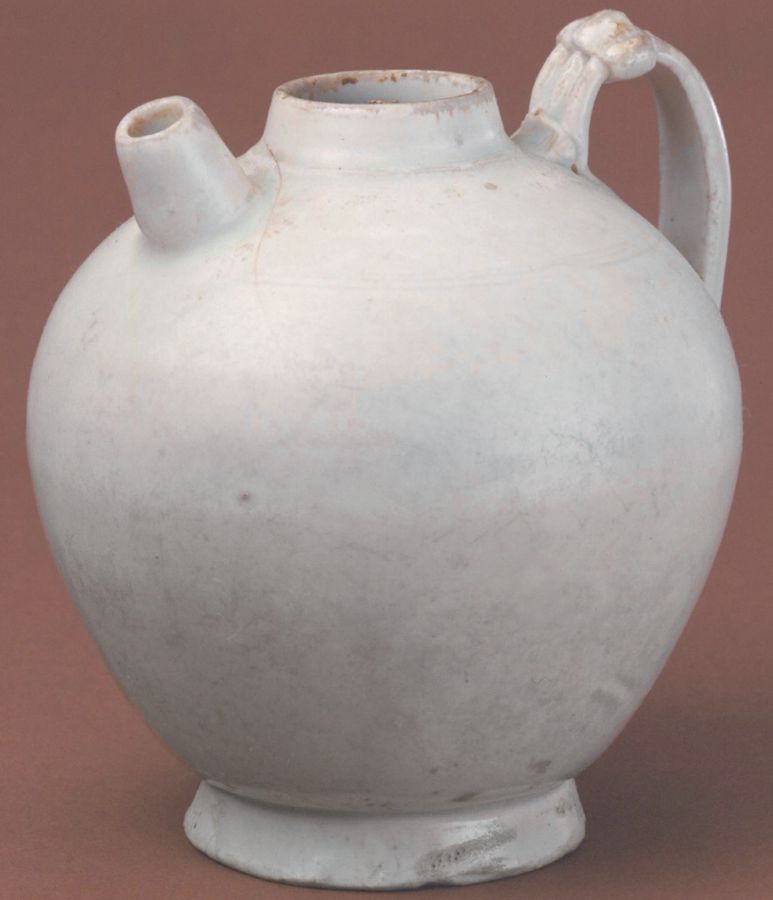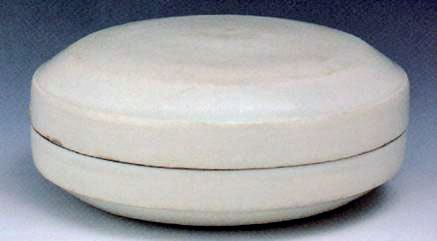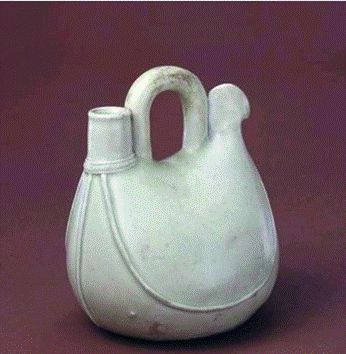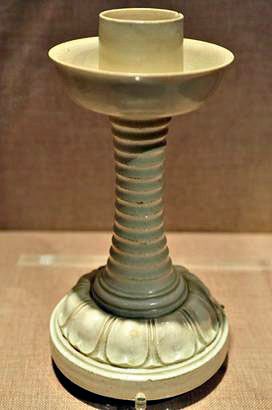PLAIN white porcelain ware is widely loved in China for its minimalistic elegance. Mature production of it first appeared in the sixth century in northern China, with the most prominent originating from the Xing Kiln in today’s Xingtai City, Hebei Province.

The Xing Kiln reached its zenith during the Sui (581-618) and Tang (618-907) dynasties, when it had a large output of products of high quality and low price that reached every part of the country including the imperial court. It was one of two best porcelain producers in China, with the other being the Yue Kiln, which was known for celadon wares.
The production of white porcelain is more demanding technically than that of celadon. The raw materials must meet higher standards, the clay has to be more processed, and the firing temperature is higher.

Covered Xing Box Engraved with the Character Ying (Shanghai Museum)
The box is entirely covered in fine white glaze except at the interface of the body and lid. At the bottom is an engraved Chinese character Ying, which is believed to stand for the name of the private warehouse of the Tang emperor. It embodies the highest quality of white porcelain wares of the Tang Dynasty.
China’s porcelain making technology began to mature in the Tang Dynasty. A number of classic pieces emerged during this period, and chinaware entered the imperial court. The white porcelain of the Xing Kiln was the first to be appointed as a royal ware, and shipped to the capital in large volumes every year. It stood out for its fluid shape, light weight, and fine glaze, which meshed with the aesthetics of the royal family.

White Xing Pot in the Shape of a Leather Bag
(Palace Museum in Beijing)
The pot is broader at the bottom and narrower at the top, with the curved handle between a short, straight spout, and a decorative fantail. To mimic the leather bag, it sports pleated and raised lines on the curved part. The glaze is white, with greenish hues at the decorative lines. On its bottom is carved the name of its maker in semi-cursive script. Pot of this design was originally made of silver or gold in the Tang Dynasty.
The Xing ware is finely modeled, and comes in various shapes and forms, including bowls, pots, cups, and other items for daily use. They are generally free of any decorative pattern, which highlights the purity of the white glaze.
A much sought Xing ware that has attained legendary status has been alleged to be of translucent white glaze. Under light of certain intensity, one can see through the item to observe the silhouette of the object next to it. Such translucency is attributed to the thin clay body, high ceramic level, and deformation-resistance under high temperatures. Despite its incredible thinness, the translucent white Xing ware is artfully shaped, some with engraved, impressed, or modeled patterns. Unfortunately not a single complete piece of this genre has been found so far. All our knowledge about it comes from shards discovered in archaeological excavation.

White Xing Candle Holder
of Lotus Pattern
(National Museum of China)
It consists of a cup to hold the candle, a pan below to catch wax drippings, a long, narrow cylinder as the handle, and a lotus-patterned seat. The undulated, spiraling lines on the cylinder are both decorative and functional – preventing the item from slipping from hands. This ware is of firm textures, and its glaze is lustrously white, representing the excellence of Tang Dynasty porcelain making.
The artistic and technical supremacy of Xing ware is explained primarily by its high firing temperature, which is believed to be 1,320 °C normally, and 1,380 °C in some cases, 100 °C above that for celadon Yue ware. This is high even by modern standards of porcelain manufacture. Ancient Chinese potters made firing at such high temperatures possible after making innovations in the design of the firing chamber, building materials of the chamber, and the firing process. The invention of the Xing ware therefore marks a technical milestone in China’s porcelain history.

Ruins of the ancient Xing Kiln.
Another reason for Xing ware’s fineness is the inclusion of magnesium oxide and phosphorus pentoxide in the conventional lime glaze, which reduce glaze dripping and cracking, and make the surface whiter and smoother.
The invention of white porcelain ended the monopoly of celadon wares since the Shang Dynasty (C. 1600-1100 BC), and laid the foundation for the creation of chinaware of other colors, especially polychromic ones. As early as the Tang Dynasty, the Xing Kiln exported to Middle Eastern and European countries. It was not until the 17th century that Europeans mastered the technique of making white porcelain.
The Xing Kiln slipped into oblivion in the Song Dynasty following the rise of the Ding Kiln in the neighboring region. It remained a myth until the 1950s-80s, when a large amount of porcelain fragments were unearthed at ancient kiln ruins in Xingtai City. Archaeologists found that besides white ware, the kiln also produced tri-colored, black, and yellow ceramics. The site of Xing Kiln was put under state protection in 1996.
After relentless research and repeated experiments, scientists have retrieved the manufacturing process of white Xing ware of centuries ago. It is now being manufactured and exported again around the world as a distinguished Chinese cultural product.
SONG XIAOYAN is a course planner of antique chinaware at the Ancient Porcelain Courtyard Museum.




